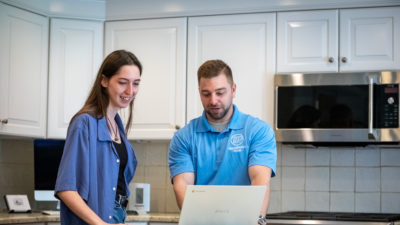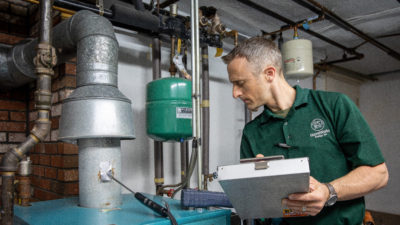There’s a lot of talk about ways you can transform your existing house into an energy-efficient home, but many people are going one step further and investing in a passive home. Passive homes are designed in such a way that they do not rely on heating and cooling technology in order to keep the home at a comfortable temperature. There are many benefits associated with living in a passive home, but it’s important to understand what it takes to be designated as a passive home.
What Are Passive Homes?
Passive homes are residential properties that are able to maintain comfortable air temperature and high air quality inside the home — regardless of the current outdoor conditions — without relying heavily on heating and cooling technology. In order to be designated as a passive home, the property has to meet the specific criteria outlined by the Passive House Institute.
There are five scientific principles that are used in the design and construction of a passive home:
-
The home must use continuous insulation without thermal bridging.
-
The home must be completely sealed from the outside elements.
-
The home must use solar windows and doors to take advantage of solar energy.
-
Balanced heat- and moisture-recovery ventilation are essential to the design.
-
If an HVAC system is present in the home, it must be used minimally and not relied upon regularly.
How Do Passive Homes Maximize Their Energy-Efficiency?
It’s important to understand that the term passive homes do not refer to architectural design. Rather, it’s a construction process that combines architectural design with the scientific principles of energy-efficiency. Passive homes are designed and constructed in such a way that they do not require the significant use of power to heat or cool the property.
This leaves many people wondering how passive homes actually work. The idea behind these homes is actually quite simple:
-
The insulation that is installed throughout the property works to protect the interior of the home and maintain the air temperature.
-
The airtight sealing helps to protect the home from the infiltration of outside air, or from the loss of indoor air.
-
The ventilation system helps to maintain the air quality of the home, reducing the need to rely on heating and cooling appliances.
What You Need to Know About Passive Home Construction
Those who are interested in passive homes need to understand that their new property is going to be built in a similar way to a conventional residential home. When it comes to building a passive home, the design stage is actually the most important part of the process. It is during this stage of construction that the plan can be created according to the rigorous passive home standards that have been established in the industry. It should be noted that your passive home could look like any type of home that you prefer — a passive home design can be created for just about any architectural style. In fact, any type of building can be designated as passive. These design principles do not have to be limited to residential properties.
The Benefits of Living in a Passive Home
The number of passive homes across the world continues to grow with each passing year, and residents are finding that there are many benefits associated with living in one of these extremely energy-efficient properties. Some of those benefits include:
The increased comfort level in the home. Many people who move into a passive home find that they are so much more comfortable in their new space than they ever have been in a conventional home in the past.
Higher indoor air quality. The amount of dirt, debris, and environmental allergens are significantly reduced in a passive home.
Better overall construction. The principles that are applied during the design process actually make the home more resilient to outside elements.
If you aren’t yet in a position to purchase a passive home or have one of these incredible passive homes built for yourself, there are still many steps you can take to maximize the energy-efficiency of your own residence. If you want to learn more about what you can do to reduce your energy usage and lower your utility costs, then the best thing to do is schedule a home energy assessment with HomeWorks Energy. Our experienced staff can identify areas of your home where you are using excess energy and help you create a plan to become more efficient.
To schedule your home energy assessment, contact HomeWorks Energy today.








